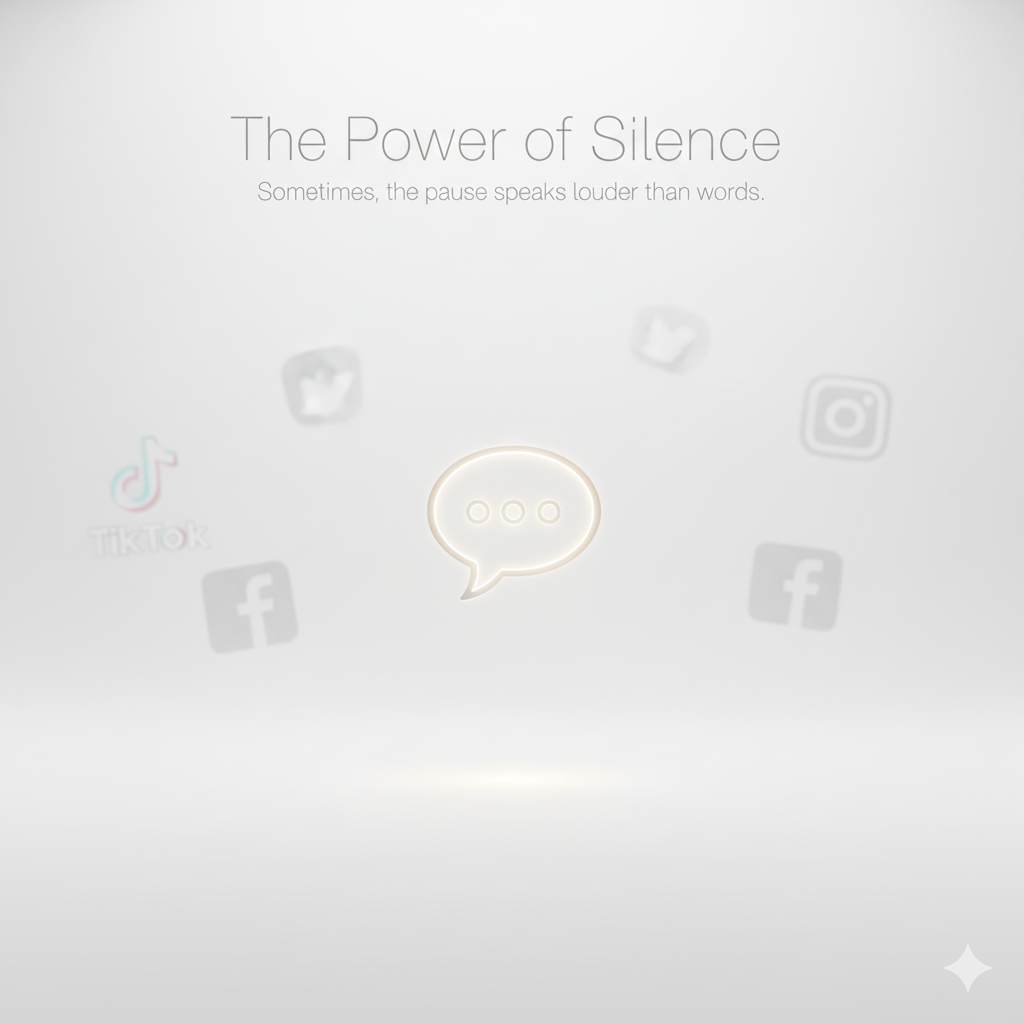
The Power of Silence - How Pause and Blank Space Create Emotion and Impact in Social Media Design
1. Introduction: Silence Speaks Louder Than Words
In a world overflowing with noise, endless scrolling, and nonstop notifications, silence has become a rare luxury. Yet in social media design and video content, silence—whether through pauses, blank space, or visual simplicity—can be one of the most powerful storytelling tools. It captures attention not by shouting louder, but by inviting reflection.
Silence and space in marketing design help brands stand out amid clutter. They allow emotion, message, and intention to breathe. When used strategically, these quiet moments can say more than a hundred words.
2. What Is “Silence” in Design and Video?
“Silence” doesn’t mean the absence of sound or activity—it means intentional restraint. In design and video, it shows up as:
- Blank Space (White Space): Empty areas that emphasize balance and focus on key visuals or text.
- Pauses in Video or Audio: Strategic breaks between scenes, words, or music that let emotion sink in.
- Minimalist Design: Simplified visuals with fewer elements to direct attention where it matters most.
- Slow Motion or Still Frames: Moments where nothing “happens,” yet viewers feel everything.
These subtle elements create anticipation, tension, or calm—depending on the emotional tone you want your audience to feel.
3. Why Silence Works: The Psychology Behind It
Human brains crave balance. After sensory overload, we naturally respond to calm and simplicity. Silence gives the audience a mental pause—a moment to process meaning.
In marketing psychology, this is called cognitive relief. By giving viewers breathing space, you increase message retention and emotional depth. It’s the same principle used by great filmmakers, designers, and musicians: rhythm isn’t just about what’s there, but also what’s not there.
Silence:
- Helps viewers focus on key messages.
- Creates emotional resonance through contrast.
- Encourages reflection instead of passive consumption.
- Makes brands appear confident—they don’t need to shout to be heard.
4. Applying Silence and Blank Space in Design
In social media visuals, the temptation is to fill every inch with color, icons, or text. But great design thrives on restraint.
Here’s how to use blank space effectively:
- Highlight your main message: Let text or logo “breathe.” Too many elements dilute impact.
- Balance visuals and emotion: Space adds sophistication and calm—perfect for luxury, lifestyle, and tech brands.
- Guide the eye: Use whitespace to direct attention naturally toward the call-to-action or core visual.
- Embrace minimalism: Less clutter = higher clarity.
Example: Think of Apple’s campaigns—clean backgrounds, few words, and one powerful image. Silence in visual form.
5. Using Pauses in Video to Create Emotional Power
In video marketing, rhythm and pacing are crucial. A well-timed pause can transform a good video into a great one.
Tips for applying silence in video:
- After emotional moments: Let the audience feel before cutting to the next scene.
- Between statements or slogans: The pause amplifies importance.
- In transitions: Use moments of stillness to change tone smoothly.
- When paired with music: Silence following music can be as powerful as the song itself.
For example, in storytelling-driven TikToks or YouTube Shorts, a sudden quiet moment amidst fast edits can stop users from scrolling—because it feels different.
6. Silence as a Branding Strategy
Brands that use silence well communicate confidence and depth. They don’t rush to fill every second or pixel; they understand the art of less is more.
It’s a form of emotional branding that:
- Builds trust through authenticity.
- Makes messages memorable through simplicity.
- Creates a premium, thoughtful brand image.
Silence and space aren’t emptiness—they are intention. They show that your brand values meaning over noise.
7. Combining Sound, Silence, and Emotion
Silence works best when balanced with sound and rhythm. Contrast is key. Use quiet moments to enhance the energy of the next beat.
For example:
- Start a video with silence → sudden beat drop → brand reveal.
- Use soft ambient noise → cut to silence → voiceover delivers message.
- Alternate quiet and loud sequences to maintain audience attention.
This emotional rhythm helps content feel alive, dynamic, and human.
8. Conclusion: Say More by Saying Less
Silence, pause, and blank space are not absence—they are presence. They make audiences stop, think, and feel.
In social media, where everyone fights to be louder, those who master the art of quiet communication stand out effortlessly. Whether in design, video, or storytelling, using silence strategically transforms your message from just “seen” to felt.
So next time you design a post, write a caption, or edit a clip—remember: Sometimes, the most powerful thing you can do is… say nothing.
📌 Visit Us: STABLESMP.COM
Suggested Keywords:
- Stable SMP
- social media panel
- SMM services
- social media marketing
- SMM reseller panel
- buy social media services
- social media growth
- increase social media engagement
- social media management
- affordable SMM panel
Date:13/11/2025